Purchased for $3.195 million in June of 2016, the 1,791-square-foot, three-bedroom, three-bath unit #30E in the LUMINA tower at 338 Main Street failed to resell when listed for only 3 percent more ($3.295 million) last May, after which is was listed for rent at $10,000 per month. For those quickly calculating that rather nominal CAP rate in your head, keep in mind that the HOA dues for the unit are $1,365 a month and the property tax bill was $42,956 last year.
The corner unit in “San Francisco’s best condominium project” features “Bay to Downtown views,” with “some of the most iconic buildings in the city framed by floor to ceiling walls of glass,” “an oversized sun-drenched living room,” and a “fabulous chef-grade kitchen” (with Gaggenau appliances, SieMatic cabinetry, and Caesarstone countertops).
And with the three-bedroom, three-bath unit with the same floor plan two floors above (338 Main Street #32E) having closed escrow with a contract price of $2.68 million at the end of last year, which was 17.5 percent below its value in the second quarter of 2016, and down 23.4 percent from the third quarter of 2019, 338 Main Street #30E has now returned to the market priced at $2.85 million, a sale at which would be 10.8 percent below its value in June of 2016 on an apples-to-apples basis. And yes, that’s despite the fact that the widely misreported Index for “San Francisco” condo values is “still up 15 percent!” over the same period of time (but dropping fast).
If you think you know the market for luxury units in San Francisco, now’s the time to tell.
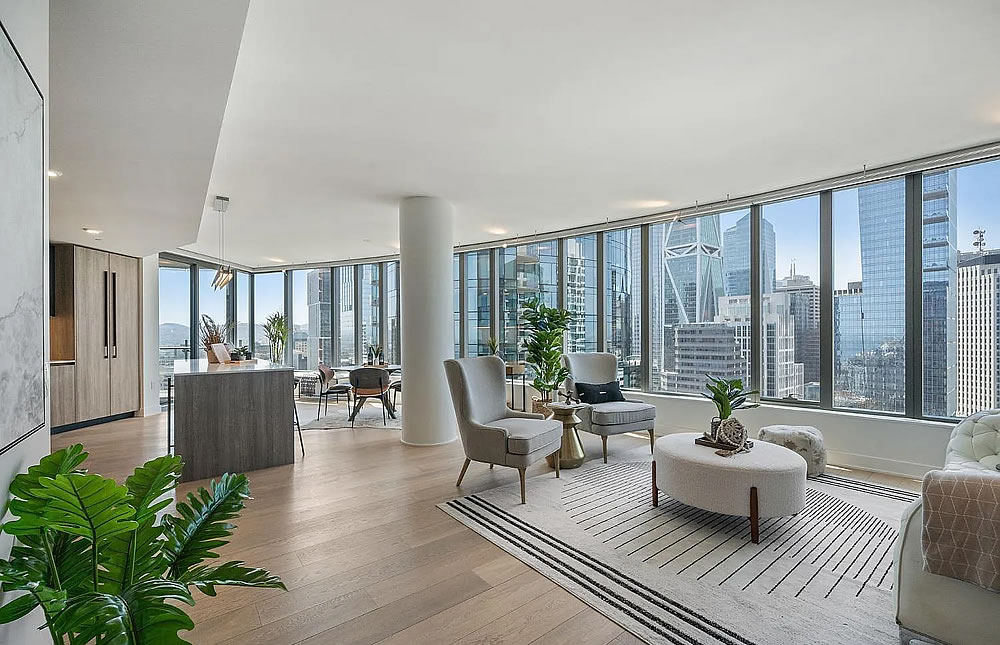
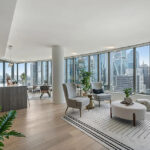
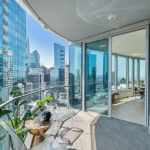
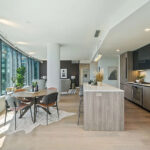
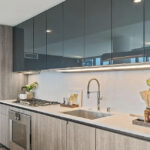
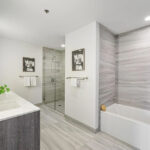
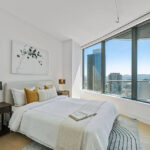
I don’t know the market for luxury units, but are buildings such as LUMINA considered true luxury buildings by those in the S.F. real estate “game”?
From three years ago, Ultra-luxury SF condo projects could test just how high home prices can go, sixth ‘graph:
Emphasis mine. Before I read that, I had the impression that the term “luxury unit” was just a shorthand used by real estate agents for prices in the top 10 percent of the market.
When the #32E unit sold for < $1,500 per ft.² in 2022 the building dropped out of the category, assuming it was ever really in it (according to the CPI Inflation Calculator at the BLS, $2,000 in 2020 would be $1,869 in 2016’s money). When this unit sold for $1,784 per ft.² in 2016 it was just underneath the above-named brokerage’s luxury housing threshold.
I have always been under the impression (completely unsupported by data) that pretty much all high-rises are luxury by definition in that the costs of construction are so high once you get above a certain floor level, they are just expensive period. And the only way the construction pencils out is that they are in a desirable locale desired by so many, that many people want to be in that tiny footprint (Ex. Manhattan, allegedly SF). But what happens when that locale is no longer desirable?
Then again, I see high-rises in “cheaper” areas, many parts of Asia (Jakarta? Seoul? Bangkok?) so obviously you can build high-rises that don’t cost US$1000/sq ft…though obviously the labor costs and rules are different in those countries. Also unknown if those high-rises are of high quality (ring of fire earthquake zone test), though, must say, our high-rises have not been known to be amazing either (the leaning Millennium, various Manhattan superskinnies).
I’m not an economist nor do I have time for a thesis, but would love to know if building high-rises is the economical and environmental way to go for humanity longterm. Whether there is such thing as the “affordable” high-rise.
There definitely is such thing as an affordable high rise…just take all of the new buildings in South Beach and add thirty years. For example, Fox Plaza in Civic Center, is a dated high rise and more affordable.
The optimal strategy that you’re alluding to is the 5-over-1 wood structure – five floors of housing above one floor of retail / other. It’s cheap to construct and remarkably dense. Paris is a dense city with no high rises because it’s entirely 5-over-1 with no gaps between buildings like high rises need.
With wood technology improving I imagine we could squeeze that up to 8-over-1 or so.
SF’s best outcome is to turn into Brooklyn or Paris, both around 55K/mile, whereas SF is at 19K/mile.
San Francisco is surrounded by water on 3 sides with only 4 routes in and out. Paris has better roadway access, as well as highly developed light-rail and long-distance rail. Brooklyn has some of our water boundary issues but has the subway and ready access to regional rail in Manhattan.
BART, MUNI Metro, CalTrain, and various suburban bus services won’t cut it.
If San Francisco is developed to the density of Paris or Brooklyn, it will be hell for everyone living in San Francisco and surrounding counties.
BART, MUNI Metro, CalTrain, and various suburban bus services won’t cut it in their current form, no. They will need to be scaled up with population growth. Solvable problem.
More ferries!
Forget the ferries, let’s keep the waterfronts open. Looking at Berkeley as an example – the proposed ferry terminal would substantially displace recreational use of the existing park. Not desirable.
CalTrain is already being scaled up.
SF doesn’t have Paris level public transportation because it lacks the population to sustain it. Double the number of riders and suddenly you can afford more extensive service. Add in a congestion charge and public transport could be even better.
Agreed on *density* of public transit lines… of course *quality* is an altogether different matter (in which we are so woefully behind) – I remember being startled at the 2-minute headway between trains on Line 2 (I think it was 2), and also learning that some of the Parisian metro lines are now fully automated (like AirTrain at SFO). Americans just can’t seem to do public transit and transit innovation properly…
only 4 routes in and out? … even setting aside ferries (which should be radically augmented) there’s the GG Bridge, Bay Bridge, 101, and 280 – I assume those are your “4” – but there’s also BART (NE and S), Caltrain, PCH/Great Highway, and many surface street interfaces with Daly City and Brisbane. Even discounting the latter category there are definitely more than “4”.
Indeed. I think SF could definitely be a city of ~2.7M (approx tripling to the density I mentioned) with some infrastructure improvement, notably a second Transbay Tube and yes, more ferries.
This would require some major re-imagining of the outer neighborhoods. The usage of land is so inefficient. In many cases it’s a small single family home taking up 25% of the lot with a huge underdeveloped backyard. Demolishing and getting to a 3-4 story building of four flats taking up 50% of the lot is all we need.
Yeah, I saw that and was like, “huh.” There are like 20 ways in. 1N, 1S, 101N, 280N, 80, old Bayshore, Lake Merced Blvd, DeLong to Alemany, Tunnel Ave, Guadalupe to Carter, freakin Mission st, etc etc.
Lots. And I mean lots of nonsense being talked on here anymore. Step it up already folks.
Haven’t been inside, but from pics it feels like awkward floorplan. Maybe view look better at night with twinkling lights. Nice bath. Good luck to seller.
There will be fewer twinkling lights than before, with the Bay Bridge lights reportedly being turned off due to lack of funding
All the better for it.
Weird take. The Bay Bridge lights are one of the most universally popular fixtures I’m aware of.
Lack of interest, really.
I prefer wood paneling, wallpaper, less glass and less stone with a polished hospital like glare. I prefer Persian carpets and furniture that is warm and richly colored. I like deep rich colors. This thing looks like a hospital suite. Where’s the fireplace? Can’t afford one?
What high rise has fireplaces?
You may like these things, but most buyers are not like you. If that look got a premium price, all new buildings would be decorated that way.
You might be disappointed to learn that carpets don’t seem to be a ‘must have’ in Persia anymore (and yes: the meanc of all white interiors is there too). OTOH, with the popularity down you might be able to get a good deal on one.
A big NO on wallpaper, the scourge of interior design. Wallpaper is an expensive way to make any room look less attractive. And when you get tired of it, it is expensive to remove. Wallpaper should be treated like a product containing toxic waste: the disposal charge should be included in the purchase price.
How ’bout – get ready for it! – white wallpaper ??